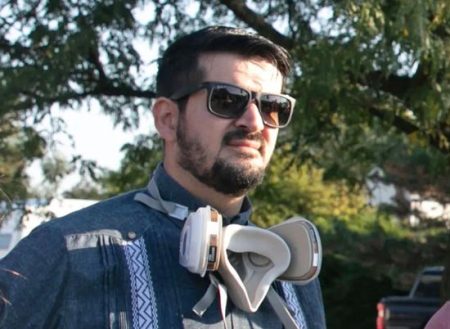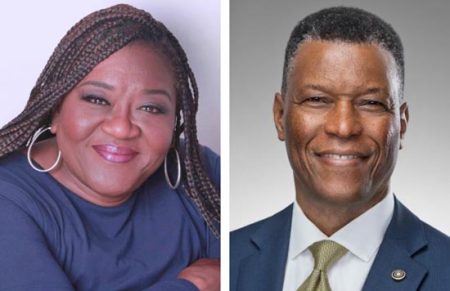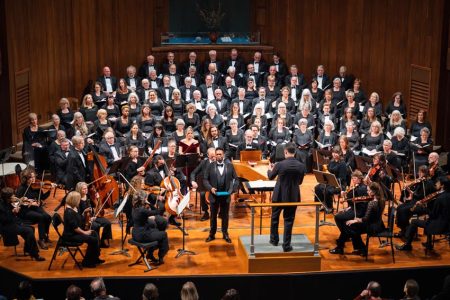We The People are Watching
 |
| The State of Our Community: How has Asheville — its intercommunity relationships, job opportunities, acceptance of diversity, etc. — changed over the past 25 years or so? Photo by Cathryn Shaffer |
As happens all too often at the end of a year, a multitude of issues continue to bedevil us into the new one.
We have become dangerously complacent about this norm over the years of our republic. I have been to the US House and Senate four times in my life and have never seen more than a handful of our public servants “serving;” that tells me we need to keep a closer watch on those to whom we entrust our nation’s, state’s, county’s and city’s business. There are plenty of issues we could discuss, but for the sake of brevity I have selected the following as most pressing:
Homelessness
A visit to Pritchard Park, the Asheville exits off I-40, 26, 240, and
the streets of Asheville will tell you that the homeless problem is
here to stay as long as we turn a blind eye to the need and not merely
the nuisance. On any given night, local shelters are full to capacity,
and on cold nights most have fifteen or twenty additional mats on the
floor.
What about the people in cardboard boxes, under bridges, on back
porches of the churches? One would think that a town that advertises
itself as open and welcoming, diverse and caring could do more to back
up its claims. We believe it can and should. Good Will, ABCCM, The
Vet’s Place and other similar services are doing everything they can
with the resources they have, but sadly, the bridges, cardboard boxes
and other alternatives are still there. Section 8 has a five-year
waiting list and even housing for the elderly is backed up while people
suffer, lose hope, or die in the cold.
Affordable Housing
How much longer will Asheville be held hostage by developers whose
vision seems limited to building fifty or a hundred McMansions
surrounded by a wall with a locked gate? Many are sold to people with
the money to scrape some trees off the mountains and plop down until
the summer sun in Miami cools down enough for them to return to the
other house. Meanwhile, area residents can’t see the stars on a clear
night because the light from the ridge tops help to make it impossible.
I wonder how many can remember when it was possible to watch a sunset
behind the Blue Ridge Mountains without the glare of houselights at a
thousand feet up?
The influx of wealthy buyers has inflated all home prices. Sky-high
property values mean that people who bought a modest house twenty or
thirty years ago pay much higher taxes even at lower rates, on
overblown valuations for affordable homes bought long ago. By the
simple allocation of brick, mortar, wood and roofing of a certain
quality in one area and not in another, we are seeing the creation of
vastly different social stratifications in Asheville. What used to be
“middle class” is quickly becoming “lower class,” and the gap is
getting worse. Does “upscale” now mean looking down on the majority of
us and saying, “I’ve got mine, so you get yours.” Is that really what
Asheville is all about?
Education and Jobs
To be fair, there has been much discussion and some strides made in the
area of education and training available to the citizens of Asheville
and Buncombe County in the past few years. Test scores have improved,
racial gaps have been narrowed, and such schools as A.C. Reynolds and
Claxton have received recognition for excellence. Still, there is much
to be done about drop-out rates and modernizing curriculums while
sticking to strong core basics of reading, writing, math, science, the
arts, and social studies. Teachers work hard, and if done right,
teaching is hard work. Having spent thirty years as a teacher working
with the so called “at risk” youth, I can attest to that fact. But
nothing short of a national initiative can revive our once vaunted
educational system.
Why not start it right here in Asheville? Mom and Dad: Put down the
cell phone, crack pipe, joint, or bottle of whatever, turn off the TV,
stop thinking about yourself, and “parent” your kids. Tell them that
education is their future, that there is right and wrong, that pleasure
can be found between the covers of a book! Tell them. Show them by
example. Teach them.
As far as a future is concerned, it ought to include an occupation
built on that education, or at least the opportunity. Someone once told
me in a humorous but serious vein that if you were making twenty-one
dollars an hour in Asheville, it was because you were working three
jobs. I hope not. But what are the options for work? If you are a
medical person, the opportunities abound. If you are high enough in the
hospitality industry, you too can have a good income. These are great
assets, but the world has changed for many of us. The mills are
closing, moving to Mexico or China, or Singapore. Technology is the key
today.
There are efforts underway to make Asheville a nexus of technology, the
arts, and commerce. The Hub project has garnered support from the city
and county as well as private resources, and there are many
professionals in high tech fields — videographers, computer software
designers, multimedia artists — supporting themselves through their
work.
There are also a few businesses like the late Robert Moog’s operation
and the Sonopress CD pressing plant in Weaverville. Elected officials
are working with business leaders and entrepreneurs to make Asheville a
climate research center, and numerous entrepreneurs have developed
small high-tech businesses that provide them with self-employment. But
much more needs to be done to create more well-paying jobs to Asheville
and surrounding communities, such as manufacturing the high-tech
products that are designed here. Spruce Pine, North Carolina provides
some 80 to 90 percent of silica for the production of computer chips
worldwide. Any ideas?
Crime/Gangs
A year or so ago an officer sitting in my house told me the Asheville
police had no credible evidence that there was gang activity in this
town. But at-risk youth will tell you differently. Gang violence is
neither uncommon nor out of public view. It comes in various colors and
languages: black, white, speaking street slang, Hispanic, Russian, you
name it. How’s that for diversity? Not even home security systems,
walled communities, and locked gates offer complete protection.
Still, crime statistics don’t always bear out the truth, and rumors —
the word on the street — have to be treated with caution. Here are some
questions that are being raised in the public mind: Are crime
statistics from Deaverview, Pisgah View, Hillcrest, South Asheville,
North Asheville, and other of Asheville’s neighborhoods not always
reported? Is it possible you could be beaten or shot because you were
or were not wearing your red or blue “flag” on the wrong side of town?
Have you heard about citizens feeling so unsafe on the track, or
basketball or tennis courts, and that some recreation facilities, paid
for with tax dollars, are effectively unavailable to them? Drugs,
prostitution, violent crime, gambling? It’s all here and easy to find.
Just ask Bobby Medford.
What Else Needs Addressing
There is much to be done, and many issues to be addressed, to make
Asheville a truly desirable and diverse place to live and work in
reasonable peace and safety. Families, churches, governments,
businesses, all need to be part of the solution or we will continue to
be part of the problem.
How about improved public transportation, passenger rail, better use of
one of our potentially great assets, the airport? Will we spend more
money to “study” what to do with the Civic Center? Can the city put its
financial house in order by judicious fiscal policies and not simply
increase the tax base by annexing up swaths of Buncombe County? The
city of Hendersonville took up a public collection and sent their World
War II vets to Washington to see their own war memorial. What a great
way to show civic pride on behalf of a community’s citizens!
Asheville has been called an All-American City more than once, and it
appears on countless “best 10” lists. Wouldn’t it be great if Asheville
could simply be America’s most livable city — not just for the
super-rich, or retirees, or art lovers, or jetsetters, but for ALL its
residents? It’s up to us to make it so.
We all have to do better, and that includes the understaffed Urban
News. It’s not time to toss up our hands and surrender, because there
is plenty we can do. Register to vote — and vote. Help your neighbor.
Raise your kids. Pray. Think. Act. Take the time to attend a city
council or commissioner’s meeting and speak your mind — even if your
voice shakes.
– Bill Moore, Asheville, NC








